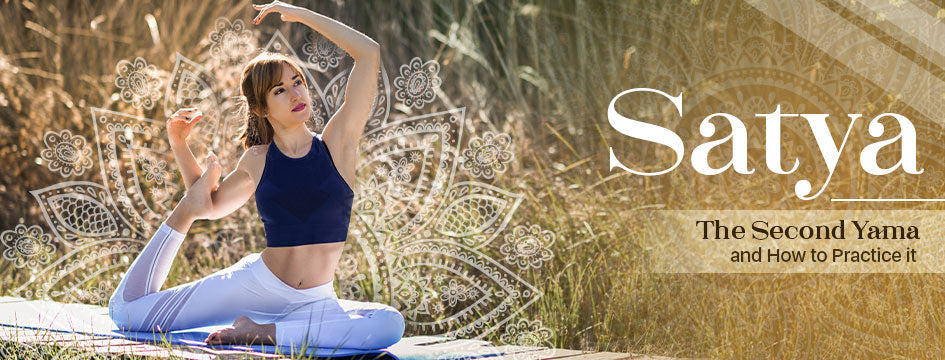
Satya - The Second Yama of Yoga and How to Practice it
Those who have read about the five Yamas in the Yoga Sutras of Patanjali know Satya Yama, the second Yama in Patanjali’s Ashtanga (eight-limbed) yoga path. The Yamas help attain spiritual enlightenment by working as ethical restraints, things we should avoid doing to achieve spirituality.
Each limb of the Ashtanga path is crucial, and so is every Yama. But is it possible to master one Yama? Perhaps not. We must move on to the next step with the previous one.
Get a detailed insight into the Yamas in our earlier discussion. It explains all five of them and will give you an insight into how they are connected.
Now, let us understand Satya, or as we call it, the path to truthfulness.
What Does Satya Mean?
“Sat'' means true nature/essence; something unchangeable, beyond us, time, and space. The word Satya, in its entirety, means truth. But does it only mean telling the truth?
Being truthful is beyond honesty but an unconditional commitment to truth through intentions, words, and actions. We must balance our honesty and become more aware to understand the reality of Satya.
Straying away from truthfulness does not only signify lying but also being closed and less transparent to others and ourselves. To practice Satya, we must become real, raw, and honest to ourselves and the world as a whole.
How Can One Practice Satya?
The answer is simple, but the process is not. We must be clear with ourselves through our thoughts, words, and actions to eventually realize what the truth is. We will guide you through the process if you are willing to participate in this journey of realizing the essence of higher frequencies.
Now…we can start by stopping ourselves from lying or concealing the truth, embracing transparency. While many of us build a wall of (what we call) security when socializing, it is not the right approach to life. Imagine how anyone would take advantage of you when you have nothing to hide.
For example, we can be honest with ourselves about a potentially unhealthy relationship instead of trying to accept it entangled in fear, guilt, or shame, only to suffer in the future.
But Satya is not only about practicing honest communication; there is something far greater - there is cosmic truth. Understanding the greater truth takes time and commitment to truthfulness in the physical world. Let us look into a few ways to practice it in everyday life.
Being Authentic and Honest
Unless we can be true to ourselves, it will not work. Taking the time to reflect on our actions and behaving naturally with others, friends, or strangers, can make us feel real irrespective of the time and place.
One common mistake we believe everybody makes is changing our nature to earn love. But changing into something we are not is easily distancing ourselves from the truth.
For instance, we need not drink at a party only to blend in with others. It does not make us bad or socially awkward but shows our sincerity and authenticity. When we are true, love, respect, and trust come naturally from others.
Being Vulnerable Instead of Pretending to be Not
Strong personalities with vulnerabilities exist. They do not create a pretentious shield but accept who they are.
Our problem is that we are scared to show ourselves. It has never been easy to feel vulnerable deliberately, nor does it feel comfortable. But once we can achieve this feat, life transforms almost miraculously.
Being true is not weak, it is instead a sign of courage; it is deep, real, and irrefutable. If we choose to live vulnerably, we accept the truth, that which is undeniable.
Discovering Life’s Purpose
Have you ever asked yourself what the purpose of life is and how you want to make a difference in your lifetime? If not, it is high time to do that.
These are honest questions that allow us to find honest answers that can help us transcend beyond lies and imitation and embark on truth discovery.
Meditating on Satya
While we can shape our minds and energy with the above practices, we can add Satya meditation to our journey to find the greater truth. Meditating on Satya enables us to leave behind opinions and judgment and calculate our strengths and weaknesses, that too, without judging ourselves.
Meditation teaches us kindness and balance. However, meditation becomes possible when we give up on distractions. For instance, learning new yoga techniques from the Internet. We need not dismiss technology but use it to our advantage. We can practice yoga poses to boost our chakras and rebalance our emotions instead of spending time watching reels.
Immersing in Satya (truthfulness) teaches honesty and the ability to indulge in a greater meaning to life. It is just one step towards higher spiritual enlightenment, but a crucial one.




